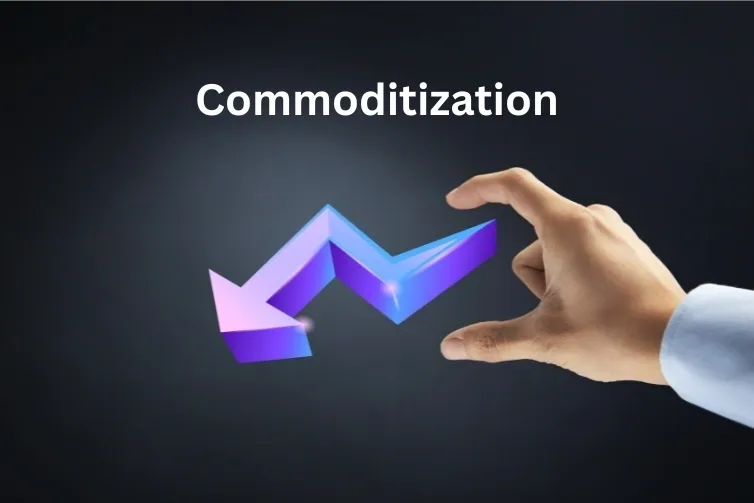In today’s business world, there’s a fine line between meeting market demands and sinking into a sea of sameness. When a product or service becomes indistinguishable from others in the market based on its features or benefits, it’s said to have been commoditized. While this might appear like an inevitable phase in the product life cycle, the implications of commoditization can have a significant impact on a business’s profitability and competitiveness.
The Downside of Commoditization
1. Lowered Margins
The most direct impact of commoditization is the erosion of profit margins. When products or services become commodities, differentiation diminishes. Customers see little value in choosing one brand over another based solely on price. As a result, businesses often find themselves in a price war, continuously undercutting competitors to gain market share. But this is a perilous game; as prices decrease, so do profits, making it harder for companies to reinvest in innovation, marketing, or customer service.
2. Decreased Brand Loyalty
In a commoditized market, brand loyalty often takes a back seat. When consumers see little difference between offerings, they have less incentive to stick with a particular brand, making customer retention more challenging.
3. Reduced Competitive Edge
Innovation is a key driver of competitive advantage. However, in a race to the bottom on pricing, there’s less capital available for R&D, limiting opportunities for innovation. This stagnation can cause a business to lag behind, especially when upstart competitors introduce disruptive technologies or novel approaches.
Strategies to Avoid Commoditization
Navigating the treacherous waters of commoditization requires proactive strategies. Here are some effective approaches:
1. Innovation and Continuous Improvement
Consistently upgrading and evolving your product or service is crucial. Apple, for example, has managed to stay ahead in the competitive smartphone market by regularly introducing innovative features, designs, and technologies that set its products apart.
2. Focus on Brand Building
A strong brand can act as a shield against commoditization. This doesn’t just mean having a recognizable logo or catchy slogan, but building a brand ethos that resonates with customers. When consumers identify with a brand’s values and beliefs, they’re more likely to stay loyal, even if similar products are available at a lower price.
3. Diversify the Offering
Broadening your product or service range can reduce the risk of commoditization. By targeting different customer segments or needs, you can maintain higher margins in some areas even if others become commoditized. For instance, a coffee shop might introduce gourmet or specialty brews alongside standard offerings, catering to both the average consumer and the connoisseur.
4. Embrace Niche Markets
Sometimes, the broader market may be too saturated, leading to commoditization. In such cases, focusing on niche markets can be a valuable strategy. By catering to specific needs or demographics that are underserved, businesses can command higher prices and maintain loyalty.
5. Deliver Exceptional Customer Service
When product differentiation becomes challenging, the service surrounding the product becomes crucial. Companies that offer exceptional customer support, post-sale services, or unique buying experiences can create a competitive edge.
6. Utilize Pricing Strategies
Consider value-based pricing instead of cost-plus pricing. Understand the value your product or service provides to customers and price accordingly. Bundling products or services, offering loyalty programs, or introducing tiered pricing models can also help maintain margins.
7. Stay Informed and Agile
Lastly, always keep a pulse on market trends, emerging technologies, and competitor activities. An agile business model that can swiftly adapt to changes will be better positioned to avoid the pitfalls of commoditization.
The Final Word
While commoditization is a real threat in many industries, it’s not an inevitable destiny. By understanding the risks and actively implementing strategies to differentiate and add value, businesses can ward off the perils of becoming just another face in the crowd and maintain a competitive edge in the marketplace. Remember, in the world of business, it’s not just about staying afloat, but sailing ahead with distinction.
For more information or to discuss your particular situation contact us at the following…
www.transformativesalessystems.com
765-623-5623

